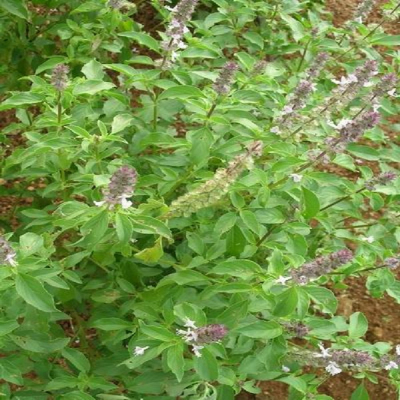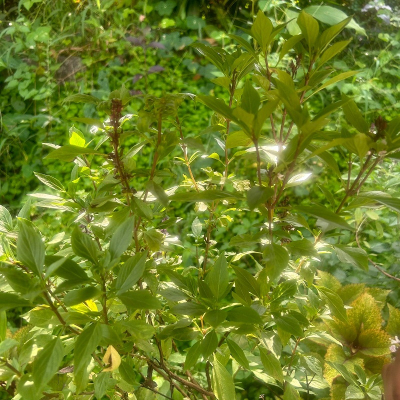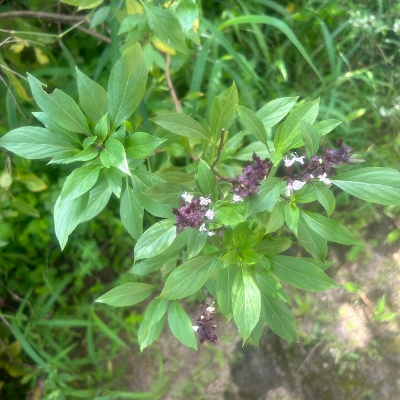Distribution and habitat: Well distributed in Tropical and subtropical regions from sea level to 1800 m.
Botany: Sweet or French Basil is an erect, almost glabrous herb; bracts are petiolate,
- Leaves : Ovate to lanceolate.
- Flowers: Long, terminal racemose inflorescence and seeds black and ellipsoid. Ovary bicarpellary, syncarpous, bilocular, Stigma bifid, fruit nutlets.
Properties: Plant is aromatic, anti-inflammatory, carminative, diuretic, antipyretic, cardiotonic etc. The seeds are refrigerant, diuretic, aphrodisiac, stimulant
Chemical constituents: Ocimum oil is rich in camphor, citral, geraniol, linalool, linalyl acetate, methyl chavicol, eugenol and thymol
Uses: It is useful in inflammations, rheumatoid arthritis, anorexia, cardiac debility, skin diseases, cough, intermittent and malarial fevers.
Agro-technology
Soil and climate: Basil can be cultivated on a wide variety of soils, though moderately fertile well drained loamy or sandy loam soils are considered ideal for its cultivation. The growth is poor in areas that receive heavy and continuous rainfall. Frost is harmful to the plant.
Propagation: Through seeds. The seed rate is about 125 g/ha. Seedlings are first raised in the nursery and 6‑10 cm tall seedlings are transplanted at 40‑60 cm spacing in rows.
Manuring: At the time of planting, apply 10‑15 t/ha farm yard manure. A fertilizer dose of 40:40:40 kg/ha of N, P2O5 and K2O is recommended for economic yield.
After cultivation: Irrigation is done once in a week when cultivated in summer. The field should be weed-free for the first 20‑25 days. .
Plant protection: Leaf spot caused by Corynespora cassicola, scab by Elsinoe arxii, blight caused by Alternaria species and Colletotrichum capsici are the main diseases which occur in the crop. It can be controlled by spraying 0.2% zineb or maneb. Wilt caused by Fusarium oxysporum is more pronounced in rainy season. This is controlled by drenching with mancozeb at 0.1%.
Harvesting and processing: Basil is harvested when the plant is in full bloom (9‑12 weeks after planting) and lower leaves start turning yellowish. For high quality oil, only the flowering tops are harvested. In some areas it is possible to get four floral harvests. The first harvest is done when the plants are in full bloom and the subsequent ones after every 15‑20 days.
Floral harvests yield 3‑4 tonnes of flowers and the final harvest of the whole plant yields 10‑15 tonnes of herb per hectare.
Thus two grades of oil are obtained, ie. flower oil and herb oil. The flower oil has a superior note and is more expensive. Distillation: Hydrodistillation is carried out for 1‑1.5 hours. The young inflorescence contains 0.3‑0.5% oil and the whole herb 0.10‑0.25%. Generally, a yield of 15-20 kg of flower oil and 10-15 kg whole plant oil is obtained per hectare.




